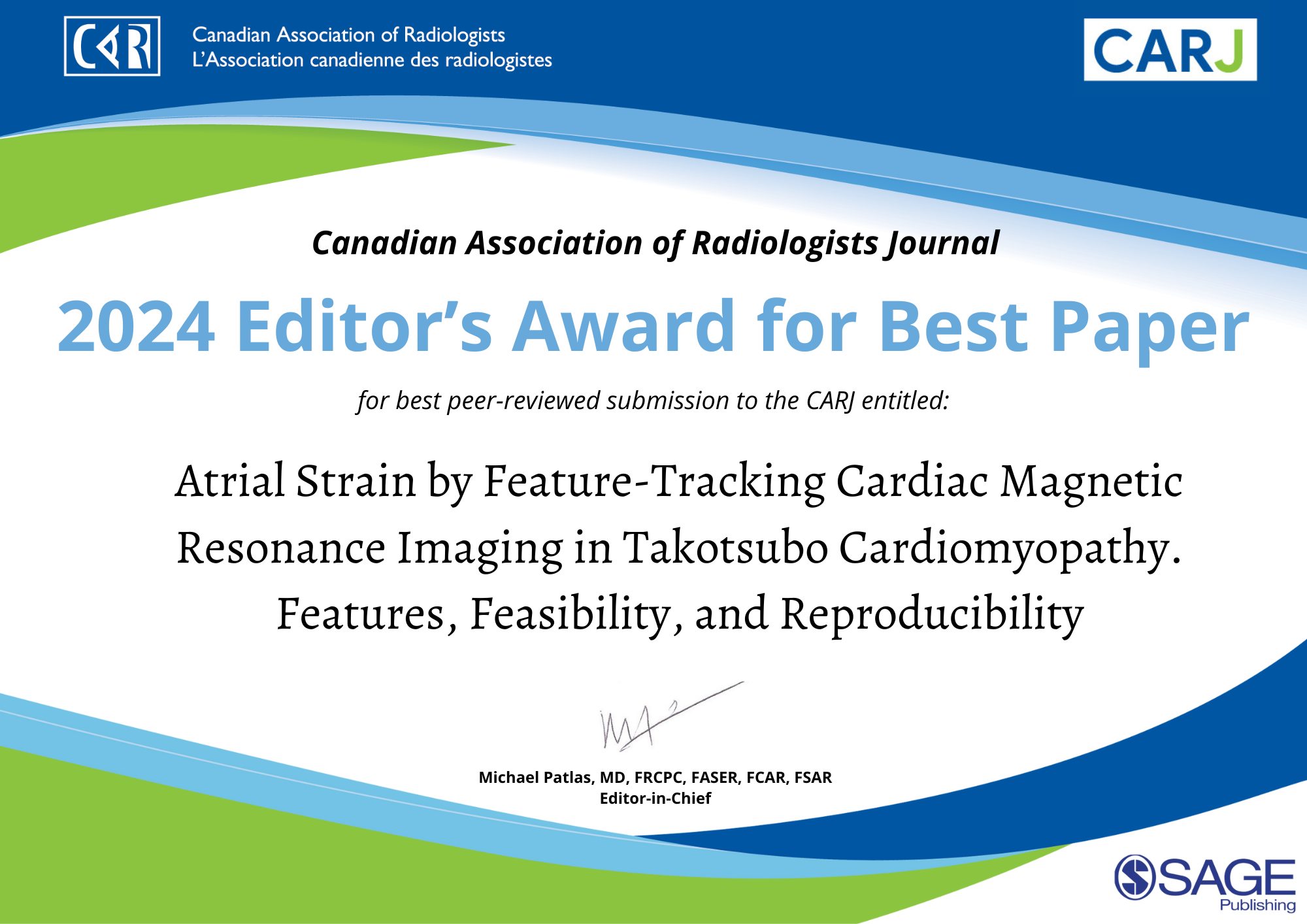The CAR Journal (CARJ) is proud to select Atrial Strain by Feature-Tracking Cardiac Magnetic Resonance Imaging in Takotsubo Cardiomyopathy. Features, Feasibility, and Reproducibility as the 2024 Editor’s Award winner.
Congratulations to each of the authors involved in the research and publication of this year’s winning article: Drs. Pierpaolo Bassareo, Gloria Caredda, Riccardo Cau, Antonio Esposito, Luca Saba, and Jasjit S Suri.

“It is truly a great satisfaction and represents a significant milestone, not just for me but for the entire group of young, talented colleagues who worked on this project,” remarked Dr. Luca Saba. “As the leader of the group, receiving an award like this is validation that our efforts are bearing fruit and that we are on the right path. In particular, this work was developed by Dr. Riccardo Cau who is leading innovative research in the applications of cardiac MRI.”
The Editor’s Award is chosen and presented annually by the CARJ Selection Committee. It recognizes original research that showcases unique importance to the field of radiology and represents potential for high scientific and clinical impact.
“Our study investigated bi-atrial dysfunction in Takotsubo syndrome (TS) using cardiac magnetic resonance imaging feature tracking (CMR-FT),” explained Dr. Saba. “We found that TS patients exhibited impaired bi-atrial reservoir and conduit functions compared to healthy controls, while booster functions remained preserved. Additionally, we identified significant correlations between left and right atrial strain parameters, offering new insights into the pathophysiology of TS.”
Dr. Saba says this project was a collaborative effort that required weaving together clinical expertise, advanced imaging techniques, and teamwork.
“We emphasized rigorous data collection and analysis while fostering an environment of continuous learning and idea exchange among team members. The successful completion of this project was due to the synergy between the clinical and technical teams, who were highly dedicated to exploring novel applications of cardiac magnetic resonance imaging.”
Dr. Saba is pleased with the findings of this study and notes that positive, long-term impact is possible with more examination.
“This research highlights CMR-FT as a potentially valuable tool for revealing previously unknown aspects of atrial function in TS patients. Further studies with larger patient cohorts are needed to confirm the role of these advanced imaging techniques in characterizing the disease.”
Congratulations to everyone involved in winning this prestigious honour.
